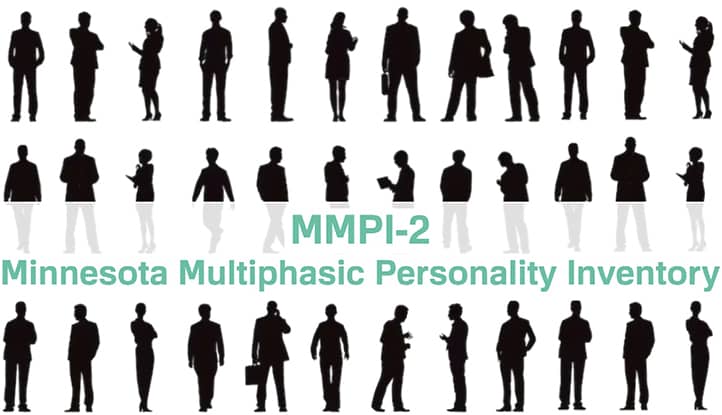In today’s fast-paced world, self-discovery is gaining increasing significance. The rapid rhythm of life, high levels of stress, and constant social changes demand flexibility, emotional resilience, and an awareness of one’s strengths and weaknesses.
Understanding personal traits helps not only in adapting to external circumstances but also in building harmonious relationships with others, making well-informed decisions, and achieving personal and professional goals. In the context of continuous information flow and social competition, the ability to understand oneself becomes a vital tool for maintaining mental health and overall well-being.
One of the most effective methods for studying one’s personality is psychological testing. Such tests offer an objective assessment of individual character traits, emotional states, and behavioral responses. Psychological questionnaires can uncover hidden motivations, internal conflicts, and even predispositions to certain psycho-emotional conditions.
Their application is relevant not only in psychotherapy but also in professional fields, such as evaluating personal qualities for recruitment or career guidance. However, not all tests are equally reliable; many fail to provide in-depth and accurate analyses, offering only superficial insights.
Among the most noteworthy tools in this domain is the Minnesota Multiphasic Personality Inventory (MMPI), widely regarded as one of the most reliable and comprehensive instruments in psychodiagnostics. Developed at the University of Minnesota in the mid-20th century, the MMPI has undergone significant refinement, becoming the “gold standard” for personality assessment. Its uniqueness lies in its structure, which encompasses numerous scales aimed at diagnosing various psychological aspects, including hidden behavioral patterns and signs of mental disorders.
Special attention in the MMPI is given to validity scales, which help detect attempts to distort answers or unconscious self-deceptive behavior, making the results particularly reliable. Due to its comprehensive scales and meticulous analysis system, the MMPI can reveal subtle personality traits that even the individual may not be aware of. This is why the test is often described as a tool that knows you better than you know yourself.

The History of MMPI
The Minnesota Multiphasic Personality Inventory (MMPI) is one of the most renowned and widely used tools in psychodiagnostics worldwide. Its development marked a breakthrough in psychology and psychiatry, offering a more objective approach to personality and mental health assessment. The creation of the MMPI was driven by the need for a standardized method of diagnosing mental disorders that would be precise enough for clinical practice yet accessible for widespread use.
Before the MMPI, most psychological tests relied on subjective evaluation methods, limiting their practical value. There was an urgent need for a tool that could objectively measure various personality aspects while minimizing biases from both the examinee and the specialist. This was the mission undertaken by the MMPI developers, who aimed to create a test that not only identified psychological abnormalities but also provided a holistic view of a person’s character.
Development at the University of Minnesota
Work on the MMPI began in the late 1930s at the University of Minnesota. The primary developers were psychologist Starke R. Hathaway and psychiatrist John C. McKinley. Their goal was to create a reliable diagnostic tool for mental disorders that could be used in clinical settings. They approached the task with scientific rigor, relying on empirical data and statistical analysis.
The development process involved collecting a large number of statements reflecting various aspects of behavior, emotions, and thoughts. These statements were based on real expressions of patients with different mental disorders. They were tested on groups of patients and healthy individuals to identify differences in responses. This empirical approach allowed the creation of scales that objectively reflected specific psychological features. The first version of the MMPI was officially published in 1943 and immediately garnered attention for its practicality and scientific validity.
Goals of the Original MMPI
The primary aim of the original MMPI was to identify and diagnose psychopathological conditions. The test included 550 statements that the examinee had to answer with “true” or “false.” These statements were grouped into several scales, each reflecting specific aspects of mental health.
Initially, the MMPI was designed for diagnosing psychiatric hospital patients, but its effectiveness quickly attracted psychologists from other fields. The test identified disorders such as depression, paranoia, psychasthenia, and schizophrenia. Moreover, the MMPI included validity scales to assess the sincerity of responses and detect attempts by examinees to present themselves in a better or worse light. This made the test a unique tool capable of not only diagnosing mental disorders but also evaluating the reliability of the provided information.
Evolution and Modernization (MMPI-2, MMPI-2-RF, MMPI-A)
Over time, it became evident that the original MMPI needed updates. Social changes, scientific advancements, and new insights into mental disorders required the test to be adapted to contemporary realities. In 1989, an updated version, MMPI-2, was released after years of revision and refinement. This new version featured revised question formulations, restructured scales, and updated normative data, enhancing diagnostic accuracy and expanding its application.
In 2008, a more compact version, the MMPI-2-RF (Restructured Form), was introduced, containing 338 statements. This version was designed for quicker and more convenient testing without compromising diagnostic value. MMPI-2-RF features an improved scale structure, allowing for greater accuracy in interpreting results and eliminating redundancy in some original scales.
Additionally, a specialized version for adolescents, MMPI-A (Adolescent), was developed to assess personality traits and mental states in individuals aged 14 to 18. This version accounts for the psychological and behavioral peculiarities of teenagers, making it an essential tool for school psychologists and adolescent psychiatrists.
The evolution of the MMPI demonstrates its resilience and adaptability to changing times. Updated versions have retained the scientific rigor of the original while becoming more precise, user-friendly, and multifunctional. Today, the MMPI is used not only in psychology and psychiatry but also in personnel selection, legal proceedings, and personality research, remaining one of the most reliable tools for self-discovery and professional diagnostics.
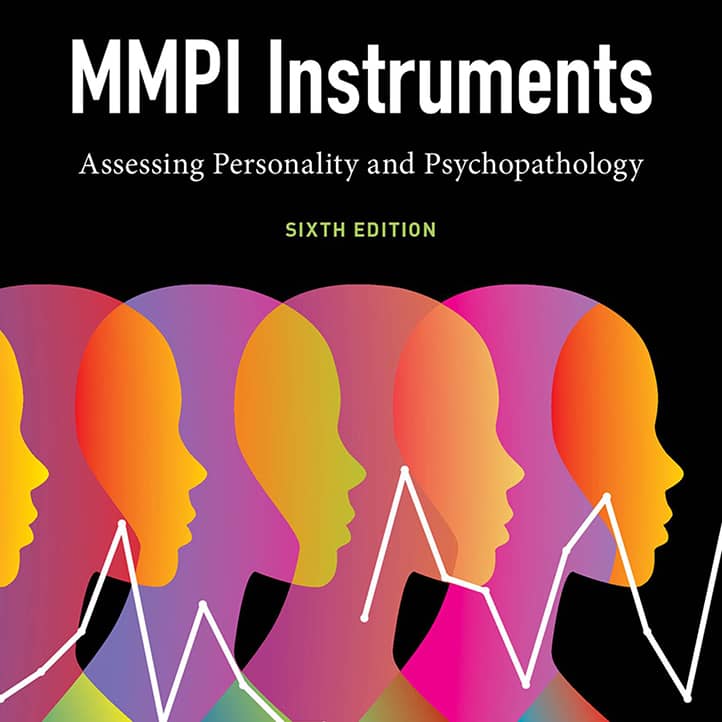
Structure and Features of the MMPI
The Minnesota Multiphasic Personality Inventory (MMPI) is distinguished by its complex and multi-level structure, making it one of the most accurate and reliable psychodiagnostic tools. The uniqueness of this test lies in its ability to not only deeply analyze personality traits but also detect psychopathological signs. The MMPI includes various scales, each aimed at evaluating specific aspects of the psyche and behavior. This structure enables a comprehensive analysis of personality, minimizing subjective factors and ensuring highly reliable results.
Special attention in the MMPI is given to preventing response distortion. Unlike many other questionnaires, the MMPI includes specific scales designed to identify attempts by respondents to present themselves in an overly positive or negative light, as well as to detect unconscious distortions in perception. This ensures that the test remains objective and reliable even when individuals attempt to conceal or exaggerate their traits.
A critical component of the MMPI is its clinical scales, designed to diagnose mental disorders and assess personality characteristics. These scales allow the identification of a wide range of psycho-emotional states—from depression and anxiety to severe psychopathological deviations. This structure makes the MMPI a universal tool applicable in clinical practice, professional selection, legal psychology and scientific research.
Number and Classification of Scales
The original version of the MMPI included 550 statements grouped into various scales. The updated version, MMPI-2, increased the number of statements to 567, while MMPI-2-RF reduced it to 338, making testing more convenient without losing diagnostic value. The adapted Soviet version, known as MMIL (Multiphasic Personality Research Method), consisted of 384 statements. MMPI scales are categorized into several types: validity, clinical, and supplementary (content) scales.
- Validity Scales — Assess the sincerity and accuracy of responses.
- Clinical Scales — Detect psychopathological personality traits.
- Supplementary Scales — Provide a deeper interpretation of results, clarifying emotional and behavioral characteristics.
This classification helps provide a holistic picture of personality and mental health, as well as verify the reliability of the obtained data.
Validity Scales: Protection Against Response Distortion
The validity scales of the MMPI play a critical role in determining the reliability of the information provided by respondents. People may consciously or unconsciously distort their responses to appear better or worse. Validity scales help identify such distortions and ensure the correct interpretation of results.
Key validity scales include:
- L Scale (Lie): Identifies attempts to present oneself in an excessively favorable light. High scores may indicate efforts to conceal flaws or conform to social expectations.
- F Scale (Frequency): Detects atypical or unusual responses. High scores may suggest a tendency toward dramatization or mental health issues, while low scores may reflect a desire to give “ideal” answers.
- K Scale (Correction): Assesses defense mechanisms and self-control tendencies. Elevated scores indicate attempts to hide problems, while low scores suggest a tendency toward self-criticism.
- VRIN Scale (Variable Response Inconsistency): Captures inconsistencies in responses, which may indicate inattentiveness or intentional distortion.
- TRIN Scale (True Response Inconsistency): Identifies a tendency toward uniform answers (e.g., excessive “true” or “false” responses), which may signal insincerity or carelessness in completing the test.
These scales allow specialists to objectively evaluate results and account for possible distortions during interpretation.
Clinical Scales: Diagnosing Personality Traits and Mental Disorders
Clinical scales are the main diagnostic tools of the MMPI. They were designed to identify various mental disorders and personality characteristics. The original test included 10 clinical scales, each responsible for diagnosing specific psycho-emotional states.
- Scale 1 (Hs) — Hypochondria: Assesses a tendency to exaggerate physical symptoms and anxiety about health.
- Scale 2 (D) — Depression: Measures levels of depressive states, despondency, and pessimistic life views.
- Scale 3 (Hy) — Hysteria: Detects emotional instability, dramatization tendencies, and problem avoidance through somatization.
- Scale 4 (Pd) — Psychopathy: Evaluates antisocial behavior, impulsivity, and difficulty adhering to norms.
- Scale 5 (Mf) — Masculinity-Femininity: Analyzes conformity to gender roles and interests.
- Scale 6 (Pa) — Paranoia: Measures levels of suspicion, distrust, and persecution ideas.
- Scale 7 (Pt) — Psychasthenia: Assesses anxiety, indecision, and obsessive thoughts.
- Scale 8 (Sc) — Schizophrenia: Identifies tendencies toward disorganized thinking, social isolation, and peculiar beliefs.
- Scale 9 (Ma) — Hypomania: Measures levels of activity, impulsivity, and risk-taking tendencies.
- Scale 10 (Si) — Social Introversion: Assesses levels of social withdrawal, anxiety, and avoidance of interaction.
These scales enable specialists to identify psychopathology and better understand individual personality traits. Based on the data obtained, personalized recommendations can be developed for therapy or corrective work.
The structure and features of the MMPI allow for comprehensive diagnosis of personality and mental health with a high degree of accuracy. The integration of validity and clinical scales ensures the reliability and depth of analysis, making the MMPI a universal and dependable tool for psychodiagnostics.
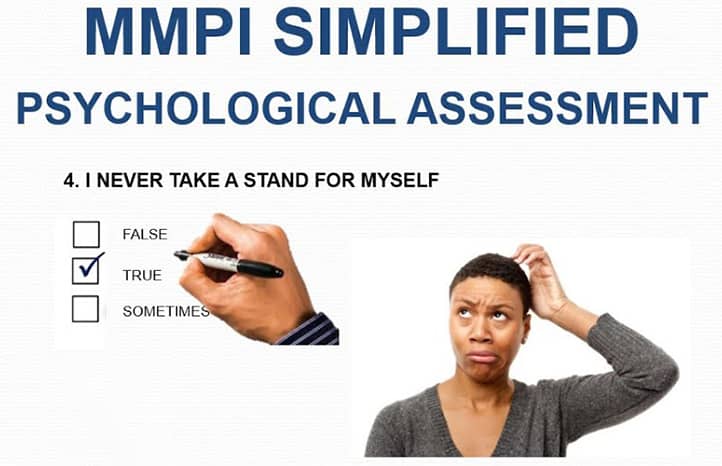
How Does the MMPI Work?
The Minnesota Multiphasic Personality Inventory (MMPI) is one of the most sophisticated and well-designed psychological tools for diagnosing personality traits and mental disorders. Its uniqueness lies in its deep and comprehensive analysis of various aspects of a person’s psyche. The test was developed to identify not only apparent but also hidden personality traits.
The MMPI is based on an empirical approach, utilizing real statistical data obtained by comparing the responses of mentally healthy individuals and patients with various diagnoses. This structure minimizes subjectivity both during the test-taking process and in the interpretation of results. The test consists of hundreds of statements covering a wide range of topics, from well-being and mood to social attitudes and behavioral habits.
The test-taking process is strictly regulated and includes special mechanisms to guard against bias and response distortion. Thanks to its complex system of validity and clinical scales, the MMPI can identify not only mental disorders but also attempts to manipulate the results.
Test-Taking Process
Completing the MMPI involves sequentially responding to a set of statements. The test-taker is asked to evaluate how each statement corresponds to their opinion or behavior by choosing one of two responses: “True” or “False”. This format simplifies the process and minimizes the influence of social desirability on responses.
Testing typically takes place in a calm environment without time limits, allowing participants to consider their responses carefully. The test can be administered in both paper and electronic formats, making it adaptable to various conditions.
The time required depends on the test version:
- MMPI-2 includes 567 statements and takes about 1.5–2 hours.
- MMPI-2-RF consists of 338 statements, taking approximately 40–60 minutes.
- MMPI-A, designed for adolescents, has a similar structure and takes about 1.5 hours.
It is essential for test-takers to respond honestly and take their time, as validity scales can detect insincerity or attempts to manipulate the results.
Sample Questions and Their Structure
A key feature of the MMPI is the carefully crafted structure of its statements, which address a wide range of topics and situations. The questions are designed to eliminate the possibility of clear-cut or socially desirable answers, thereby uncovering genuine personality traits.
Sample Questions:
- “I often have strange dreams.”
- “Sometimes I feel like harming myself or others.”
- “I prefer spending time alone rather than with others.”
- “There are times when I feel unusually energetic and active.”
- “I am certain that someone is following me.”
These statements cover various life domains, including emotional states, behavior, relationships, physical well-being, and world perception.
Principles of Question Composition:
- Empirical approach: Statements were selected based on the analysis of responses from real patients and healthy individuals.
- Avoidance of clear-cut answers: Questions are phrased to prevent obvious “right” or “wrong” responses.
- Topic diversity: Questions cover psychological aspects (mood, thinking) as well as behavioral manifestations (habits, reactions).
- Neutral phrasing: This reduces the risk of response manipulation.
Interpretation Algorithms
Interpreting MMPI results is a complex, multi-stage process requiring professional expertise. The participant’s responses are processed using a specialized scale system, where each statement correlates with specific scales. Results are expressed in T-scores, standardized by gender and age. The average scale score is 50, with a standard deviation of 10.
Interpretation Stages:
- Analysis of validity scales: The specialist first checks the reliability of the responses. If validity scales indicate response distortion, it impacts further analysis.
- Evaluation of clinical scales: Scores on the 10 primary clinical scales are analyzed. Scores above 65 T-points are considered significant and may indicate psychological issues.
- Comparative analysis: Combinations of high and low scale scores are assessed. For instance, a high depression scale score combined with a low schizophrenia scale score suggests a tendency toward anxiety without psychotic disorders.
- Personality profile: An individual psychological profile is constructed, reflecting major personality traits, tendencies toward certain behaviors, and potential psychopathological risks.
Example Interpretation:
- High depression scale (D) score + high social introversion scale (Si) score: May indicate chronic depression with a tendency toward social isolation.
- High paranoia scale (Pa) score + low psychopathy scale (Pd) score: May suggest a tendency toward suspicion without antisocial tendencies.
To simplify interpretation, specialized software can automatically calculate scores and create graphical profiles. However, final conclusions are made by a qualified specialist, considering the participant’s life context and circumstances.Conclusion
The MMPI is a complex and multi-layered tool that combines a well-thought-out question structure with detailed analysis algorithms. This approach enables the creation of a comprehensive and reliable picture of an individual’s personality and mental state.
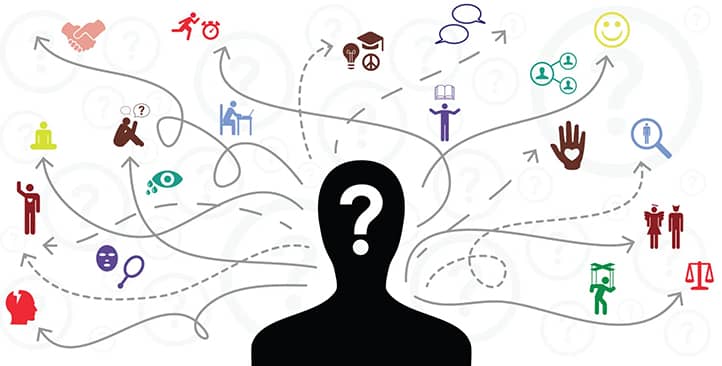
Advantages and Limitations of the MMPI
The Minnesota Multiphasic Personality Inventory (MMPI) is rightfully regarded as one of the most reliable and widely used tools for diagnosing personality traits and mental states. Its effectiveness has been validated through years of research and successful application in various fields – from clinical psychology to personnel management. The MMPI helps identify not only overt psychological abnormalities but also hidden personality traits, making it a valuable tool for assessing mental health.
However, despite its numerous advantages, the MMPI is not a universal solution for all situations. Like any psychodiagnostic tool, it has its limitations, which must be considered when interpreting results. Errors in analysis or improper application of the test can lead to distorted conclusions and, consequently, incorrect recommendations or decisions.
Accuracy and Reliability of Results
One of the primary strengths of the MMPI is its high degree of accuracy and reliability. These qualities are ensured by the empirically grounded test design and rigorous standardization procedures. The MMPI is based on extensive statistical data, enabling an objective assessment of personality traits and psychological abnormalities.
Factors ensuring the reliability of the MMPI:
- Large sample size during development: The test was created using extensive samples of both healthy individuals and patients with various mental disorders. This allowed for the development of scales that objectively distinguish between norms and pathologies.
- Validation scales: The MMPI includes specific scales (e.g., lie scales, faking scales, and social desirability scales) to detect response distortions, insincerity, or random answering patterns.
- Test-retest reliability: Repeated testing over time demonstrates stable results, indicating the test’s reliability across different periods.
- Validity: The test shows a high degree of correlation between the results and the actual psychological traits of the respondent.
These factors make the MMPI one of the most reliable tools for diagnosing mental states and personality characteristics.
Versatility of Application (in Psychology, Psychiatry, HR)
The MMPI is highly versatile and can be adapted for use in various professional fields. Its flexibility and depth of analysis make it an effective tool in medical and psychological institutions as well as in personnel management and forensic psychology.
Applications of the MMPI in different fields:
- Clinical psychology and psychiatry:
- Diagnosis of mental disorders (depression, anxiety, schizophrenia).
- Monitoring the dynamics of a patient’s condition during treatment.
- Assessing levels of psychological resilience and adaptation.
- Psychotherapy:
- Assisting in the development of individualized therapy plans.
- Identifying hidden issues the client may not be aware of.
- Forensic psychology:
- Assessing the mental state of suspects and victims.
- Making decisions about competency or criminal responsibility.
- HR and personnel selection:
- Evaluating personal qualities of candidates for critical or high-stress positions.
- Identifying risks of burnout or conflict tendencies.
- Assessing stress resistance and teamwork capabilities.
- Military and law enforcement:
- Evaluating psychological suitability for work in extreme conditions.
- Preventing the development of post-traumatic stress disorders.
The versatility of the MMPI makes it a sought-after tool in various professional fields requiring comprehensive personality assessments.
Limitations and Risks of Misinterpretation
Despite its numerous advantages, the MMPI is not without limitations, which can affect the accuracy of diagnosis and result interpretation. These factors must be considered to minimize errors in analysis and decision-making.
Main limitations of the MMPI:
- Dependence on the interpreter’s expertise:
- MMPI results require qualified analysis. A lack of experience may lead to erroneous data interpretation.
- Complex profiles with contradictory results demand deep knowledge and skills in psychodiagnostics.
- Cultural adaptation challenges:
- The MMPI was originally developed for American culture, which may reduce its validity when used in other countries.
- Adapting the test to other languages requires consideration of cultural and social factors; otherwise, the results may be distorted.
- Impact of situational factors:
- Temporary emotional states (e.g., stress, fatigue, anxiety) can influence responses.
- Conscious or unconscious attempts to manipulate results may distort personality profiles, despite the presence of validation scales.
- Test duration:
- The full MMPI-2 version can take up to two hours, causing fatigue and reduced concentration, which may affect response accuracy.
- Limited diagnostic scope:
- The MMPI is not designed to diagnose all mental disorders, such as autism spectrum disorders or cognitive impairments.
- The test does not provide definitive medical diagnoses but helps form hypotheses for further diagnostics.
Risks of misinterpretation:
- Errors in interpretation can lead to incorrect conclusions about an individual’s personality.
- Improper use of MMPI results in HR may result in discrimination or poor candidate selection.
- In legal practice, analysis errors can significantly impact a person’s fate.
The Minnesota Multiphasic Personality Inventory is undoubtedly a powerful tool for diagnosing personality traits and mental states, but its effectiveness directly depends on the proper application and interpretation of results. Understanding its limitations and adopting a professional approach enables the MMPI to be used as accurately and effectively as possible.

Practical Application of MMPI
The Minnesota Multiphasic Personality Inventory (MMPI), due to its high validity and reliability, has become an indispensable tool in various fields of psychodiagnostics. Its versatility allows the test to be used for solving a wide range of tasks: from diagnosing mental disorders to assessing professional suitability and analyzing criminal behavior. MMPI’s ability to identify both explicit and hidden personality traits makes it invaluable in the professional practice of psychologists, psychiatrists, HR specialists, and forensic experts.
MMPI is used not only for diagnosis but also as an important tool for monitoring the dynamics of mental states, preventing professional risks, and developing individualized therapeutic strategies. Thanks to its numerous scales and validity-checking system, the test helps to form a comprehensive understanding of a person, considering both their internal experiences and external behavioral manifestations.
Application in Clinical Psychology and Psychotherapy
In clinical psychology and psychotherapy, MMPI is one of the key tools for diagnosing mental disorders and assessing a patient’s personality traits. It is used at the stages of initial diagnosis, therapy planning, and monitoring changes in mental state.
Main areas of application:
- Diagnosis of mental disorders. MMPI helps identify depression, anxiety disorders, schizophrenia, hypochondria, paranoia, and other psychopathological conditions. For example, a high score on the depression scale (D) indicates a depressed mood, loss of interest in life, and low self-esteem.
- Assessment of stress levels and emotional stability. Psychotherapists use MMPI to determine tendencies toward anxiety, emotional instability, and aggressiveness, which helps in selecting effective treatment methods.
- Planning psychotherapeutic work. Test results help reveal hidden conflicts, suppressed emotions, or internal contradictions, facilitating the construction of an individualized therapy plan.
- Monitoring treatment effectiveness. Repeated MMPI assessments allow for evaluating the dynamics of the patient’s condition and adjusting therapeutic approaches.
Example of application:
A patient complaining of chronic anxiety undergoes MMPI. The results show high scores on the anxiety and social introversion scales, indicating the need for therapy aimed at reducing anxiety and developing communication skills.
Role in Professional Selection and HR Decisions
MMPI is actively used in professional selection and personnel management, especially for evaluating candidates for responsible or stressful positions. Its application helps identify personality traits that may affect professional performance and teamwork.
Main areas of application in HR:
- Assessment of stress resistance and emotional stability. This is crucial for high-stress professions (military, police, rescue workers). For example, a high score on the psychasthenia scale (Pt) may indicate a tendency toward anxiety, which is critical for stressful jobs.
- Determination of social adaptation level. Introversion and extraversion scales help understand how inclined a person is to interact with colleagues and work in a team.
- Identification of deviant behavior tendencies. Scales of antisocial tendencies help assess the risk of conflict, aggressiveness, or disciplinary violations.
- Prevention of professional burnout. MMPI helps identify factors that may contribute to burnout and take measures to prevent it.
Example of application:
During the selection process for an air traffic controller position, a candidate takes the MMPI. The results show low anxiety levels and high stress resistance, confirming their suitability for working under high responsibility.
Application in Forensic Psychiatry and Criminology
In forensic psychiatry and criminology, MMPI is used to assess the mental state of suspects, victims, and witnesses. This tool helps determine the presence of mental disorders, tendencies toward aggressive or deviant behavior and evaluate a person’s ability to understand their actions.
Main areas of application:
- Assessment of sanity. MMPI helps determine whether a person was aware of their actions at the time of the crime and whether they could control their behavior.
- Diagnosis of mental disorders. Identifying mental disorders that could influence criminal behavior (e.g., schizophrenia, paranoia, personality disorders).
- Recidivism prediction. The test allows for assessing tendencies toward aggression, impulsivity, and antisocial behavior, aiding in predicting the risk of reoffending.
- Psychological personality profiling. In legal proceedings, MMPI is used to create psychological profiles of the accused or victims, which can influence the decision-making process.
Example of application:
A defendant accused of a violent crime undergoes a forensic psychiatric examination using MMPI. The results reveal high levels of paranoia and aggression, leading the expert to suggest the presence of a personality disorder, which is taken into account when determining the punishment.

MMPI and Self-Knowledge
Self-knowledge is an essential component of personal growth and mental well-being. Understanding one’s strengths and weaknesses, emotional reactions, and behavioral patterns helps individuals interact more effectively with others and build a harmonious life. The Minnesota Multiphasic Personality Inventory (MMPI) can be a powerful tool on this path. Through in-depth diagnostics of personality traits and mental states, MMPI allows individuals to view themselves objectively, uncover hidden internal conflicts, and identify areas for development.
The test aids not only in professional diagnostics but also in personal use—for better understanding of emotions, motivations, and behaviors. However, it is important to remember that MMPI was designed as a professional tool, and its results require qualified interpretation. Misinterpretation or superficial analysis of the data can lead to distorted conclusions.
How Does the Test Help to Better Understand Strengths and Weaknesses?
MMPI provides a comprehensive analysis of personality traits, helping individuals recognize their advantages and disadvantages. The test’s variety of scales allows for a detailed examination of emotional states, behavioral patterns, and ways of interacting with the world.
Understanding Strengths:
- High scores on the Social Introversion scale (Si) may indicate a tendency toward solitude, often perceived as a weakness. However, for certain professions or creative activities, this can be a strength, enabling deep focus on tasks.
- Low scores on the Psychasthenia scale (Pt) reflect stress resilience and emotional stability, which are significant advantages in high-pressure situations.
Recognizing Weaknesses:
- Elevated scores on the Hypochondriasis scale (Hs) may point to excessive concern about health, potentially hindering a fulfilling life.
- High scores on the Depression scale (D) may reveal a tendency toward low mood and low self-esteem, necessitating attention and self-improvement efforts.
MMPI provides an objective view of personal characteristics, serving as a foundation for creating a personal growth strategy.
Development of Emotional Intelligence and Stress Resilience
Emotional intelligence (EQ) plays a vital role in managing emotions and successful communication with others. MMPI helps identify emotional and behavioral traits that may hinder or, conversely, facilitate the development of emotional intelligence and stress resilience.
How MMPI Contributes to Emotional Intelligence Development:
- Awareness of emotional reactions. Analysis of anxiety, depression, and social introversion scales helps individuals understand how they respond to stress, conflicts, and social interactions.
- Emotion regulation. Understanding emotional weaknesses allows for the development of emotional self-regulation skills and control over impulsive reactions.
- Empathy and compassion. Scales reflecting attitudes toward others (e.g., the Paranoia scale) help individuals realize how much they trust others and how they build interpersonal relationships.
Enhancing Stress Resilience:
- Individuals with high scores on the Psychasthenia scale (Pt) tend to experience anxiety and obsessive thoughts. Awareness of this trait enables work on reducing anxiety through relaxation techniques, meditation and psychotherapy.
- Low scores on the Hysteria scale (Hy) may indicate a well-developed ability to adapt to challenging situations.
MMPI helps recognize factors that hinder emotional management and stress coping, guiding efforts toward developing necessary skills.
Limitations of Self-Analysis of Results
Although MMPI can significantly aid self-knowledge, self-interpretation of its results carries several limitations. This test was designed for professional use, and proper analysis requires specialized knowledge and experience.
Main Limitations:
- Complexity of interpretation. MMPI results present a complex profile with numerous scales, whose interrelations require professional analysis. A superficial approach can lead to incorrect conclusions about mental health.
- Risk of overdiagnosis. Without proper training, individuals may misinterpret high or low scale scores as signs of mental disorders, although they may reflect situational traits or normal individual differences.
- Ignoring context. Psychologists consider many factors when interpreting MMPI—age, gender, cultural background, life circumstances. These factors may be overlooked in self-analysis, reducing the accuracy of conclusions.
- Inadequate self-assessment. People tend to either exaggerate their problems or ignore them. This can distort result perception and lead to incorrect actions.
Useful tips:
- It is better to take the MMPI under the guidance of a qualified specialist who can accurately interpret the results.
- If the test was taken independently, results should be used as a basis for reflection rather than a definitive diagnosis.
- If concerning results are observed, it is advisable to consult a psychologist or psychotherapist for professional guidance.
Thus, MMPI can be a valuable tool for self-knowledge and personal development, but its results require a cautious and conscious approach. Only professional interpretation can provide accurate and useful information for further growth and self-improvement.
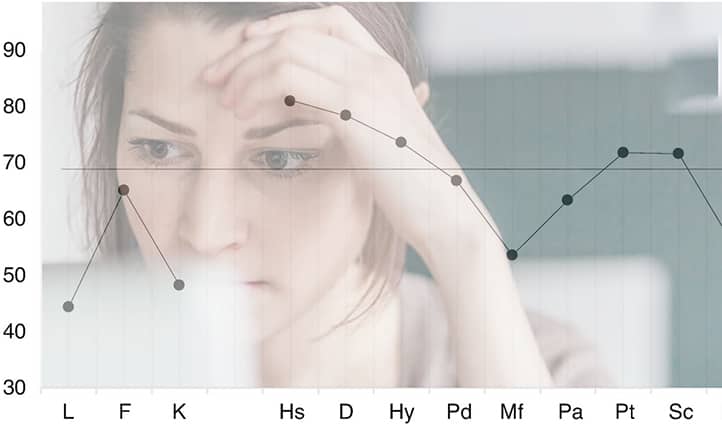
Recommendations
The Minnesota Multiphasic Personality Inventory (MMPI) is a powerful tool for in-depth personality analysis and the diagnosis of mental states. Taking this test can be significantly beneficial both professionally and personally.
However, to obtain objective and useful results, it is important not only to choose the right moment for taking the test but also to consult a qualified specialist for interpretation. Additionally, for comprehensive self-knowledge, it is advisable to consider other personality analysis methods that, combined with MMPI, can provide a more complete picture of internal processes.
Who and When Should Take the MMPI?
Taking the MMPI can be beneficial for various groups of people in different life and professional situations. This test helps identify not only hidden personality traits but also mental states that require attention.
Recommendations for Taking the MMPI:
- People experiencing emotional or psychological difficulties. If someone is facing chronic anxiety, depression, loss of interest in life, or emotional burnout, the MMPI can help identify the causes of these conditions and determine whether professional help is needed.
- Those who want to better understand themselves. Individuals striving for personal growth and self-awareness can use the MMPI to analyze their strengths and weaknesses and understand their emotional sphere and behavior.
- Clients of psychotherapists. The MMPI is used in psychotherapy for diagnosis, treatment strategy development, and assessing changes in psycho-emotional state.
- Professionals in high-risk occupations. Military personnel, law enforcement officers, rescuers, and air traffic controllers take the MMPI to assess stress resistance, emotional stability, and professional suitability.
- Applicants for responsible positions. Some companies use the test for selecting candidates for leadership roles or positions requiring high responsibility and emotional resilience.
- In forensic psychiatric practice. Individuals involved in legal proceedings may be asked to take the MMPI to determine sanity or analyze mental state.
Taking the test is especially relevant during significant life changes or when experiencing internal discomfort when it is important to better understand one’s emotions and behavior.
How to Choose a Qualified Specialist for Result Interpretation?
MMPI results present a complex profile requiring professional interpretation. Only a qualified specialist can accurately decode the data and offer justified recommendations.
Criteria for Choosing a Specialist:
- Relevant education. A psychologist or psychotherapist should have a degree in psychology or psychiatry. Additional training in psychodiagnostics and working with the MMPI is an advantage.
- Experience with MMPI. It is important to clarify how often the specialist works with this test. An experienced psychologist better understands the nuances of the scales and their interrelations.
- Licenses and certifications. In some countries, specialists must have a license or certifications confirming their right to practice psychology and use diagnostic methods.
- Reviews and recommendations. Study client reviews or consult a specialist by recommendation. This will help assess whether their approach aligns with your expectations.
- Ethics and confidentiality. The psychologist should adhere to ethical standards, ensure complete confidentiality of results, and avoid hasty conclusions without deep analysis.
- Ability to explain results. A good specialist not only reports results but helps the client understand their meaning and provides recommendations for further steps.
Where to Find a Specialist:
- Psychological centers and clinics.
- Online platforms for finding specialists.
- Professional communities and associations of psychologists.
Alternative Methods of Self-Knowledge for Comprehensive Personality Analysis
Although the MMPI provides a deep and multifaceted personality analysis, its results are more useful when combined with other self-knowledge methods. This allows for a more complete understanding of personality, emotional state, and behavioral patterns.
Popular Alternative Self-Knowledge Methods:
- Psychological tests and questionnaires:
- Cattell’s 16 Personality Factor Questionnaire (16PF) analyzes traits like self-confidence, anxiety, and sociability.
- Beck Depression Inventory (BDI) assesses the level of depression.
- Myers-Briggs Type Indicator (MBTI) determines personality type based on behavioral and thinking preferences.
- Art therapy. Drawing, collage, and other creative practices help reveal hidden emotions and internal conflicts.
- Meditation and reflection. Mindfulness practices contribute to deeper self-understanding and better comprehension of emotions and reactions.
- Coaching and personal development training. Working with a coach or attending personal growth training helps set goals, identify barriers, and outline development paths.
- Psychotherapy. Individual or group sessions with a psychologist allow for deep work on internal conflicts and personality traits.
- Emotion and thought journaling. Recording experiences and thoughts helps track emotional reactions and behavioral patterns.
Why Combining Methods Is Important:
The MMPI focuses on diagnosing mental states and personality traits but does not always provide a complete picture of behavioral attitudes or life priorities. Combining the test with other methods allows for a deeper understanding of oneself, one’s goals and motivations, and working through complex emotional states.

Conclusion
The Minnesota Multiphasic Personality Inventory (MMPI) has remained one of the most authoritative and reliable tools in psychodiagnostics for decades. Its popularity and demand stem from its high reliability, depth of analysis, and ability to identify a wide range of personality traits and mental states.
The MMPI has evolved from a basic diagnostic tool to an advanced test used in psychology, psychiatry, forensic examination, and personnel selection. Its scientific validity and extensive research foundation make the MMPI the “gold standard” in personality assessment. No other questionnaire offers such a detailed and comprehensive analysis of a person’s inner world, combining clinical and validity scales, making it unique and reliable.
However, it is essential to understand that the effectiveness of the MMPI directly depends on professional interpretation. This test was designed with complex psychological interconnections in mind, and its scales require deep analysis. An untrained individual may misinterpret the data, leading to incorrect conclusions and misguided actions.
A qualified psychologist or psychotherapist can accurately decode the results, consider individual personality traits, life context, and external factors influencing responses. The specialist helps reveal the true psycho-emotional state, identify risk areas, and suggest paths for personal growth or correction. Professional interpretation of the MMPI is not just a reading of numbers and scales but a comprehensive analysis that offers a new perspective on oneself.
Taking the MMPI can be an important step towards deeper self-understanding. This test helps uncover hidden internal conflicts, recognize strengths and weaknesses, emotional reactions, and behavioral patterns. For many people, the MMPI becomes a starting point for personal change, increased emotional resilience, and conscious self-development.
Combined with professional support, test results provide a powerful impetus for self-discovery and open new horizons for self-improvement. The MMPI serves as a tool for enhancing quality of life, building healthy relationships, and achieving harmony in personal and professional spheres.
